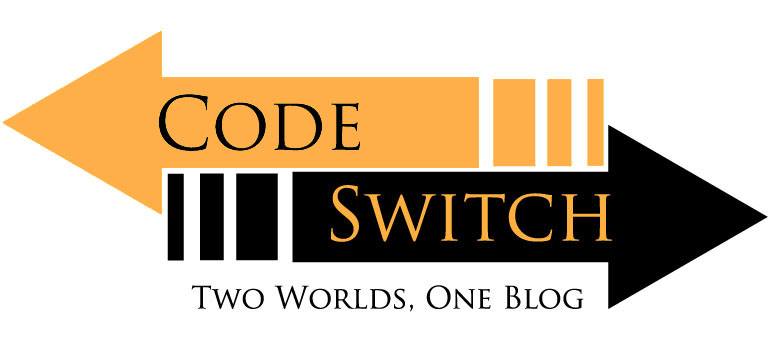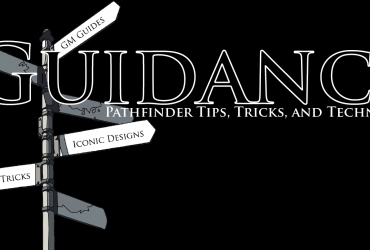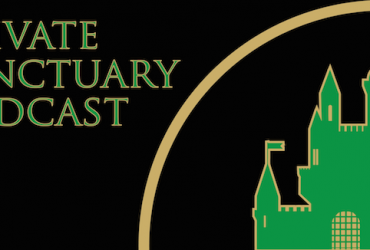Quick! When were you born? When will you die? What day of what month of what year did you first taste ice cream? You probably only have the answer to one of those questions and that’s fine. Today we’ll be talking about time, and depending on how you keep time your answer may change!
Calendars
Most calendars can be placed in one of three categories: lunar, solar, and lunisolar. Lunar calendars measure time by lunar cycles, solar calendars measure time by the position of the Earth relative to the sun using things like seasons and equinoxes as constants, and lunisolar calendars combine both calendars to compensate for any inaccuracies. Some calendars deal with this better than others, with some calendars losing as many as 10 days a year!
To set a base of reference let’s quickly go over the Gregorian calendar, the most widely used calendar worldwide. Created by Pope Gregory in 1582, the calendar made to improve accuracy over its predecessor the Julian calendar. Pope Gregory’s real beef with the Julian calendar was that the Julian calendar had an excessive amount of wiggle room. The Julian calendar had a flaw in which the calendar gained a day roughly every ~130 years. This may not seem like much, but by the time Gregorian calendar was introduced Easter was 10 days later than it should have been. Easter’s date, by the way, was set to take place around Spring Solstice as set by the Council of Nicaea in 325 AD.
Why did this error happen with the Julian calendar? There are a lot of answers to that, but the short answer is “The Earth doesn’t round.” Calendars, and time measurements are cut into nice proportional ratios. The Earth doesn’t care about our calendars about our math, it does what it wants. The Julian calendar made the average year 365.25 days in an attempt to approximate the solar year (Solar year as going from spring equinox to spring equinox). The actual solar year is actually a few minutes shorter than 365.25 days, and the Julian calendar didn’t account for this. As a result the calendars years gained about 3 days every 400 years observed against equinox times. The Julian calendar eventually added leap years to account, but the Gregorian calendar further observed those leap year on “better” years, to make a calendar which only gains a day every 3,200 years!
That was a long story just to explain why we now use the Gregorian calendar rather than the Julian calendar. Also, it’s not the only calendar in the world, not by a long shot. I’ll jump into a few notable examples in a minute, but I want to talk about Golarions calendar first.
Golarions Calendar
Golarions calendar is a carbon copy of the Gregorian calendar. I’m sure it was done for ease of use for us Pathfinder players. Just like Earth a Golarion year is split into 12 months with 7 day weeks with each day being 24 hours long. The names of the month are changed as at the names of the days, but it’s an exact mimic of the Gregorian calendar. There are two notable things about the Golarion calendar; the first is that it directly corresponds to Earth time. The date this article is posted is Tuesday, May 24th, 2016, that date on Golarion is Toilday, Desnus 24th, 4716. The next day will be Wednesday, May 25th, 2016, that date on Golarion is Wealday, Desnus 25th, 4716. The day, month and last two digits of the year are synced up between the Gregorian calendar and the Golarion calendar. This actually highlights the next interesting thing about Golarions calendar, its start. The current year in Golarion is 4716 A.R. This indicates it’s been 4716 years since “Absalom Reckoning” the day that Absalom was founded by the God of Humanity Aroden, signifying the start of the Age of Enthronement. This is a parallel to the start of our Gregorian calendar which has its starting date marked by the birth of Jesus Christ. Aroden is Golarion Jesus confirmed.
Great, now we know about our Gregorian calendar, the Julian calendar, and the Golarion calendar. Time is always kept based on those familiar 12 month years with 365 or 366 days in them, bing, bang, boom.
Except not always.
Telling time with the aforementioned calendars is great. They’re familiar, consistent, and fairly easy to use. That said there are hundreds of calendars on Earth. Each one denotes time according to the culture of its people and what they feel is important. I want to highlight the Japanese, Mayan, Islamic, Hebrew, and Chinese calendars as examples of alternate timekeeping that can be useful to improve immersion at your Pathfinder table.
Japanese
The Japanese used to use a version of the Chinese calendar until the Meiji Reformation. As part of the reformation Japan adopted the Gregorian calendar wholesale. Going as far as rejecting the traditional February New Year and moving the beginning of the year to January to match the Gregorian calendar. There is one part of the traditional calendar they kept “Era Name” (Nengo).
Every emperor’s reign begins a new era. For example in 1926 Emperor Hirohito ascended to the throne. His era was called “Showa” roughly translated as “period of enlightened peace and/or harmony”. The first year of his reign was Showa 1. When Emperor Hirohito died in 1989 or Showa 64. When his son ascended to the Emperor the next day, the date became Heisei 1. This method of timekeeping works very well for groups with strong ties to people or events. You could substitute the ascension of emperors with things like; years between comets reappearances, years between invasions, or years between a deities miracles.
Mayan
The Mayan calendar is a bit confusing so stay with me here. The Mayan calendar has 3 cycles of different lengths. The first is a 260 day count know as “Tzolkin”. The Tzolkin has 13 days, and separately from that each day is given a name from a sequence of 20 names. This produces 260 unique dates which were used mostly to determine the time of religious events and for divination.
Next we have the “Haab”. The Haab is made of 18 months with 20 days each, with an additional 5 extra days called “Wayeb”. Those 5 days were viewed as an inauspicious time when the barriers between the our world and the underworld became inactive. The Haab had exactly 365 days and served as the Mayan year. The extra quarter day of the actual tropical year was ignored, so seasons would drift from their months by about 6 hours each year. Together Tzolkin and Haab combine to form something called “Calendar Round”. A calendar round date is a date that gives both a Tzolkin and a Haab, and the starting date will repeat after 52 Haab years.
Lastly, the Mayans had a system for measuring time longer than a few lifetimes called “The Long Count”. The Long Count has days called “K’in”, and 20 of them made up an “winal”. 18 winals made one “tun”, and 20 tuns made one B’ak’tun. The Long Counts start date from the Mayan creation date, August 11th 3114 BC on the Gregorian calendar. These Long Counts were mostly used for monuments, and the Long Count was responsible for that Mayan Doomsday Crisis. In a nutshell; a B’ak’tun was coming to an end and people misinterpreted it as the end of the world, when it was more like 1,999 becoming 2,000. While super confusing for us, the Mayans used this calendar with ease. I could see dozens of adventures revolving around mistaken time due to an alien method of timekeeping.
Islamic
The Islamic calendar is a lunar calendar made of 12 months which have 354 or 355 days. The first year of the calendar is marked by the emigration of Muhammad from Mecca to Medina in 622 A.D. The Islamic calendars lunar style “lags” behind solar calendars like the Gregorian by about 10 days every year. This causes months of the Islamic calendar to fall in different parts of each year compared to solar calendars. The calendar “fixes” itself every 33 years to put dates back in line with their solar calendar counterparts. Interesting each month on the Islamic calendar coincides with a new moon, and this is accomplished by viewing the crescent moon of the previous lunar cycle. This makes lengths of months variable due to positioning of the earth or weather conditions.
Hebrew
The Hebrew calendar is a lunisolar calendar whose start date is Anno Mundi (Creation of the world) which corresponds to 3761 BC using the Gregorian calendar. The calendar has 12 months and years are either 353, 354, or 355 days long. To account for the 11 day shorter lunar year the calendar uses opposed to solar calendars the Hebrew calendar adds a month every 2 or 3 years to a total of 7 months every 19 years. Another interesting bit about the Hebrew calendar, is there is no fixed length of a day. Rather dates are modelled from evening to morning as per the creation account in the book of Genesis. Also, hours are defined as 1/12 the time from sunrise to sunset. This gets really wonky between seasons or at extreme latitudes where the sun doesn’t set for months!
Chinese
Lastly, I’ll talk about the Chinese calendar. The calendar is lunisolar and each month begins on the day of the new moon, with year beginning on the new moon middle-most between the winter solstice and spring equinox. The solar year is also measured in the Chinese calendar, measured from winter solstice to winter solstice and being broken into 24 events called “solar terms”. Each solar term coincides with the rotation of the sun relative of the Earth by 15 degrees, and with some natural or astronomical event. The solar terms are important to farmers as they more accurately determine growing seasons, as opposed to lunar calendars which drift dates substantially from their original places.
It’s bothered me a bit everyone on Golarion uses the same calendar, no matter the race or nation. On Earth we have so many different calendars based on so many different things. Why would the mostly subterranean dwarfs use a solar calendar? How did they tell time before the Quest for the Sky? What is the timekeeping system for Dark Folk and people from the Plane of Shadows?
I don’t have these answers, but hopefully better understanding our calendars, and looking at Golarions calendar better helps you explain time in your games in fun and interesting ways. What are some ways you keep time in real life or on the tabletop? Tell me in the comments, I’m eager to hear about them.







I’ll start. In the home game for Big Eyes Small Mouth I use the Gregorian calendar. It takes place in Tokyo in 2265, some places in game use years post-skyfall rather than the AD start date, but they still use the Gregorian calender.